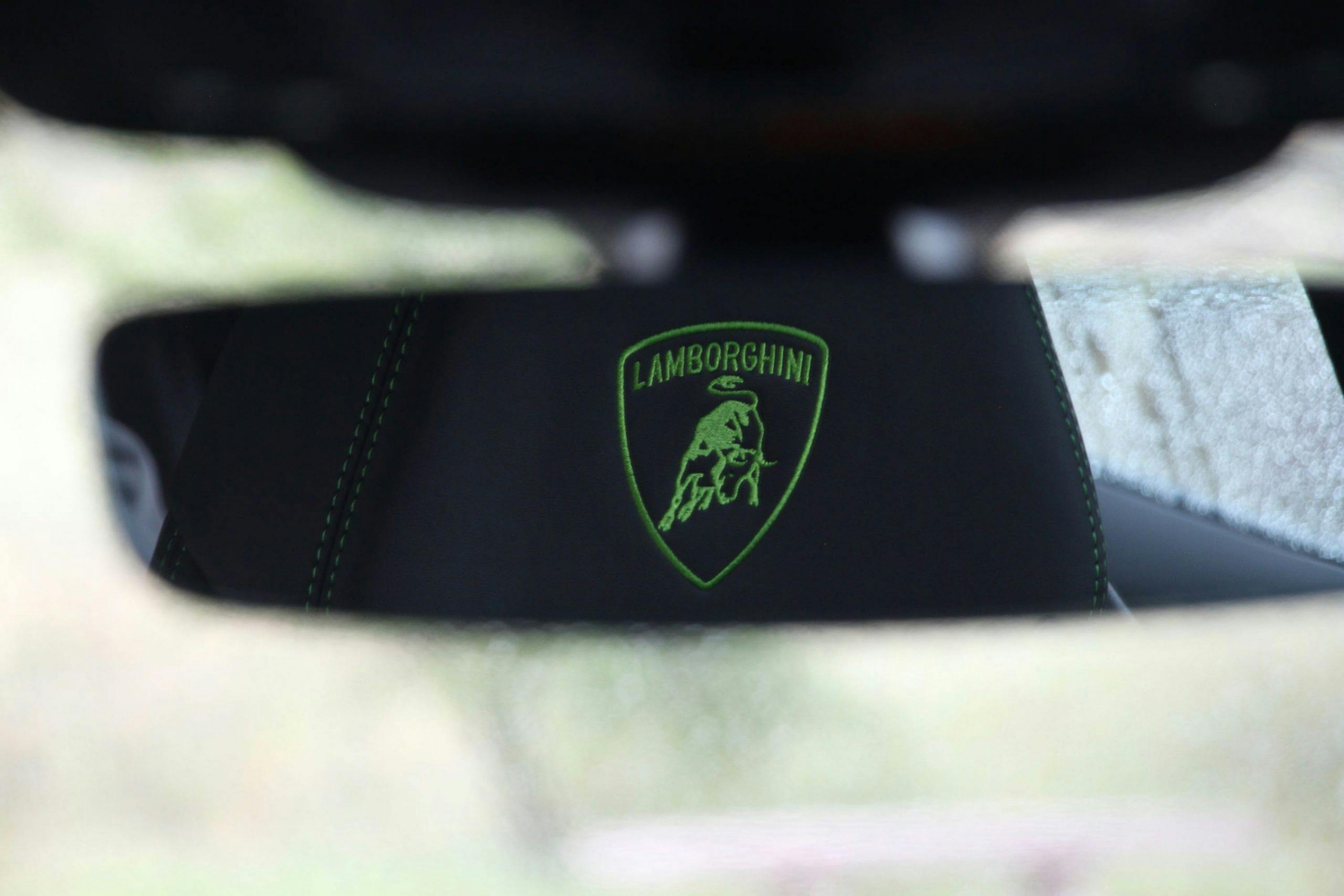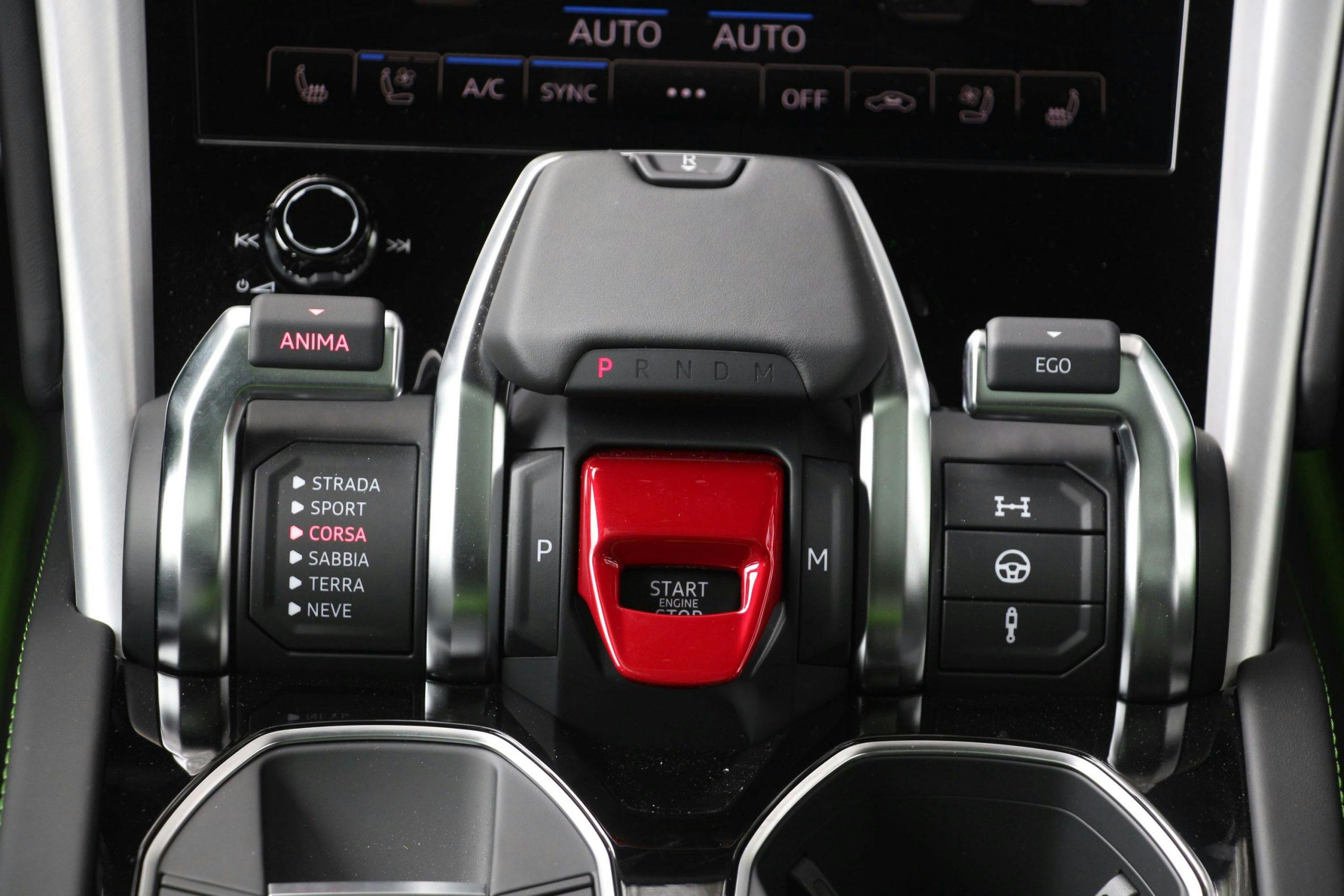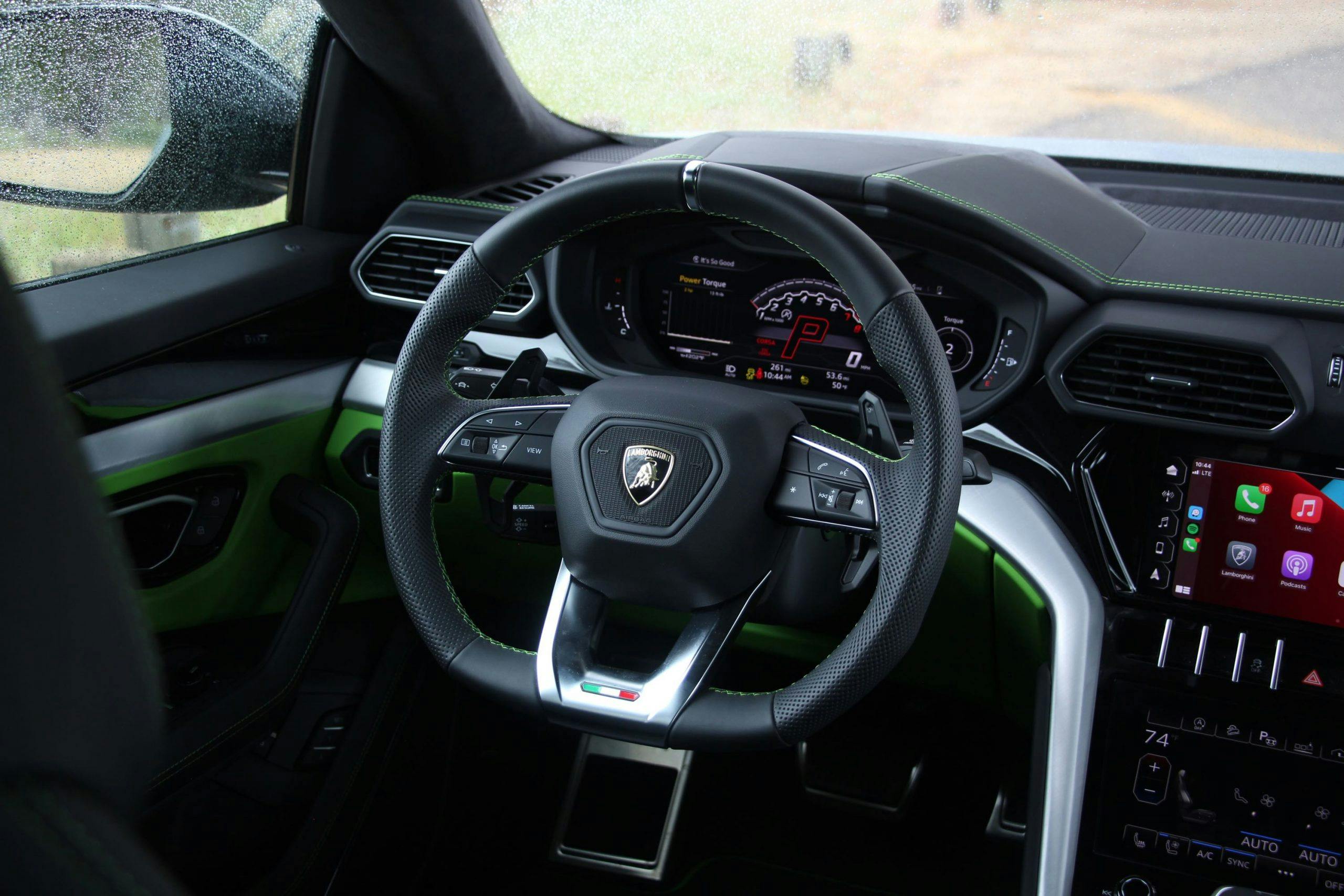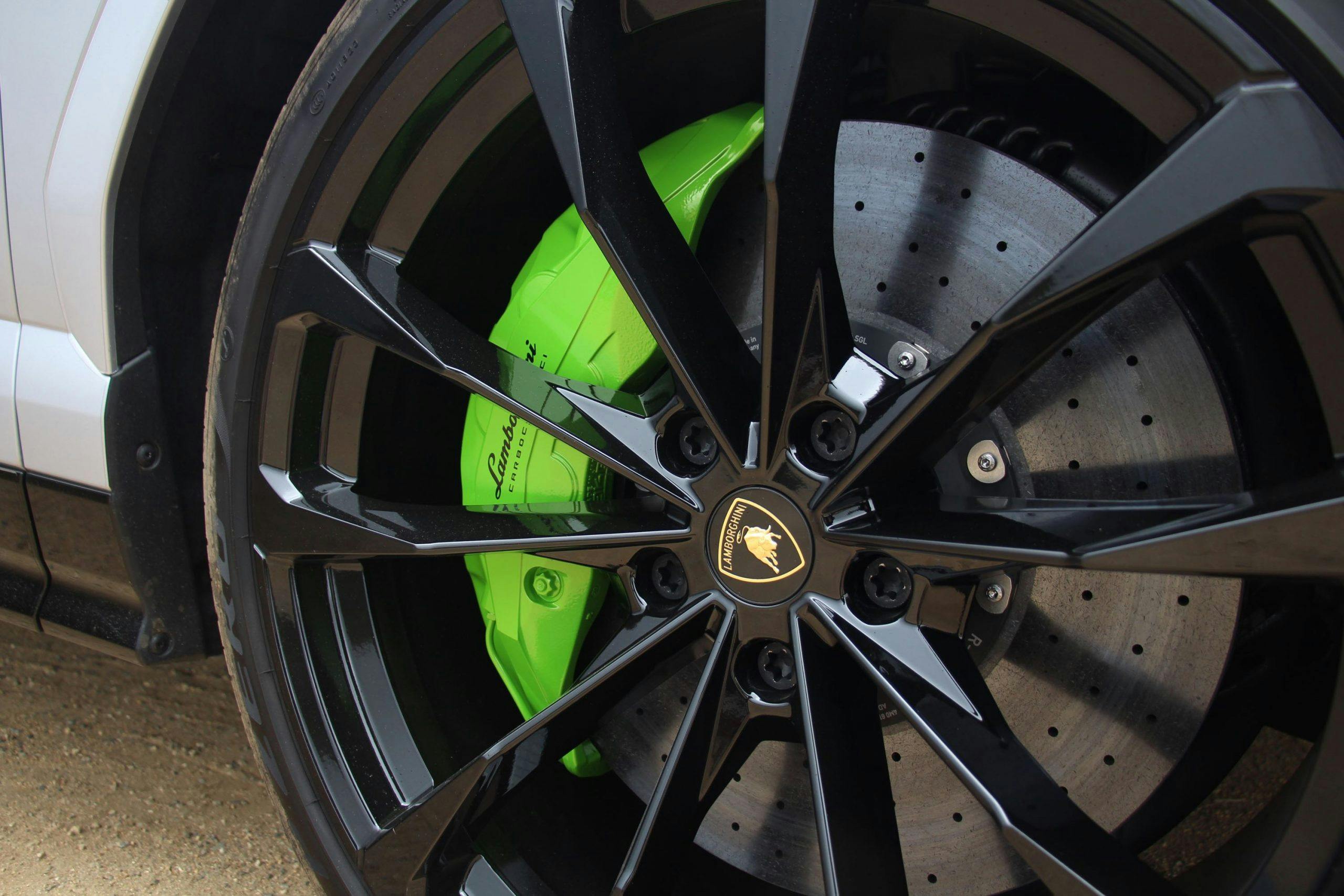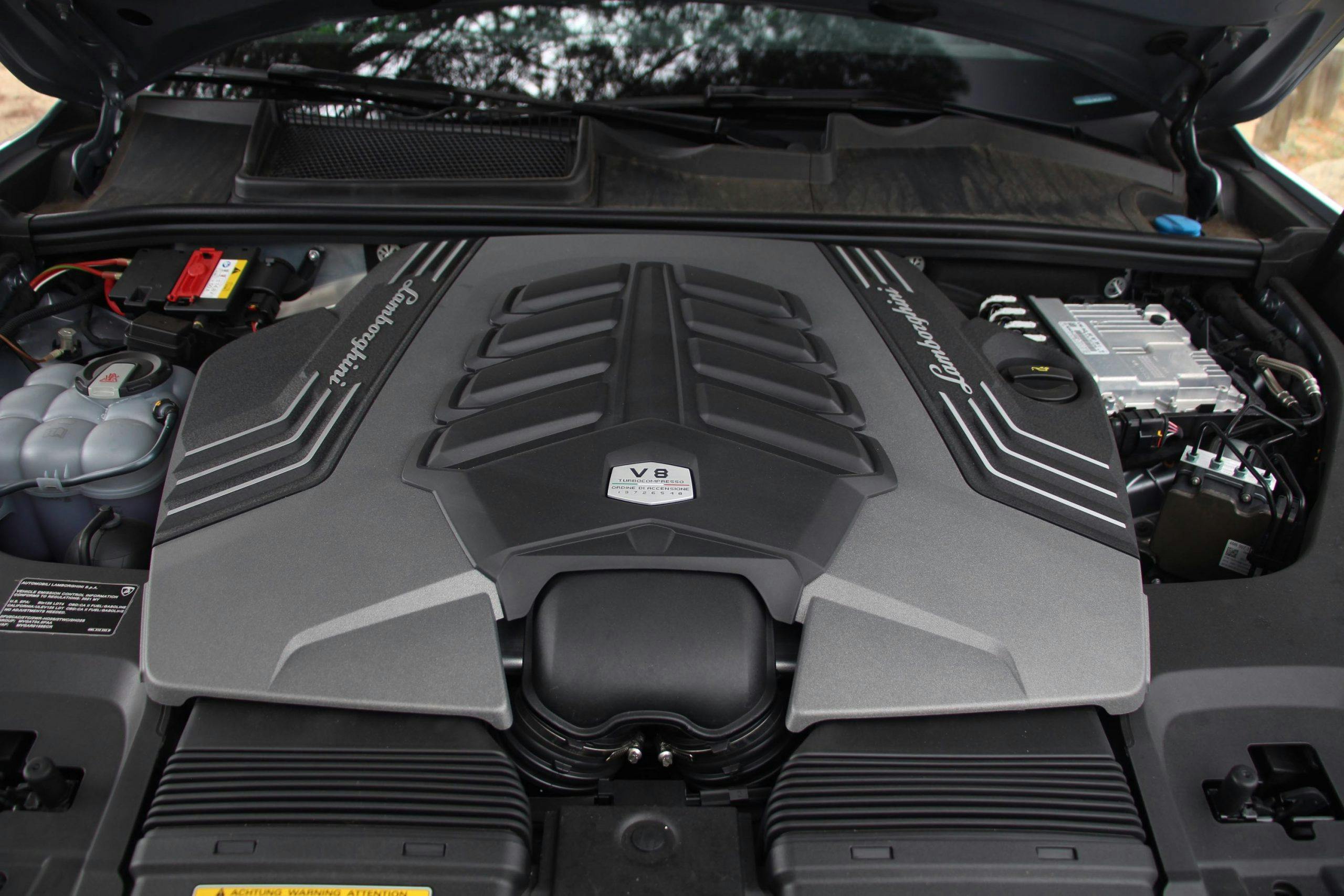How I learned to stop worrying and love the Lamborghini Urus

Sport utilities have found homes with buyers from one end of the market to the other, and for good reason. Compared to sedans or even to wagons, SUVs have taller seating positions for greater visibility and easier hip points for middle-aged drivers. They can haul plenty of people and things, and, in the right spec, can traverse the toughest of terrain.
Luxury carmakers like Bentley and Rolls-Royce were hardly the first to realize that stuffing a big motor into one of these high-riding people-haulers made good business sense. You might be thinking about the Grand Cherokee SRT8, the Mercedes-Benz ML 63, or BMW’s X5 M, but I’m willing to argue that Bill Harrah’s “Jerrari” mashup was first to the performance-SUV party back in 1969.
In modern times, most premium manufacturers—even those who, 50 years ago, would have considered an SUV an irrelevant anathema—have committed to these lucrative sport utilities. Porsche’s cooking up an über-Cayenne with 600+ horsepower to reign over its robust family of Cayennes and Macans. The folks at SRT thought it was wise to put the 707-horsepower Hellcat engines under the hoods of Grand Cherokees and Durangos (and we quite approve of the strategy). Ferrari’s Purosangue is due to arrive in the not-too-distant future, and even Bugatti has completed an SUV design study, though Molsheim has yet to make a final decision about production.
When it comes to dynamic performance, however, even big power can’t overcome a tall center of gravity—not to mention the two-ton-plus mass of these beasts. As someone who grew up with Countach posters on his walls, I never considered that a sport utility from Sant’Agata would be a sound idea. Or at least that’s what I believed until I drove the Lamborghini Urus.
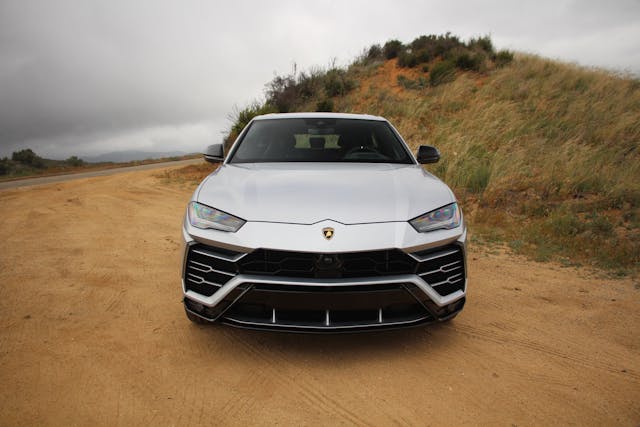
Having tested the range of Lamborghini supercars over the years, I’d discounted the Urus and generally ignored it, save for twice a day when one of my neighbors drives by with his bright yellow model. As it turns out, I was living in ignorant bliss.
On paper, the Urus appears to be yet another posh sport utility stuffed with a burly, forced-induction powerplant. 650 horsepower and 627 lb-ft of torque—courtesy of a tuned 4.0-liter, twin-turbo V-8—is nothing to sniff at, however, even when tasked with motivating a 4800-pound vehicle. When it was unveiled in December of 2017, customers voted with their wallets. Even with a starting price well over $200K, the Urus quickly became Lamborghini’s most popular model, selling well over ten thousand units since its introduction. (That’s nearly three times the combined 2019 sales figures for the Aventador and the Hurácan.)
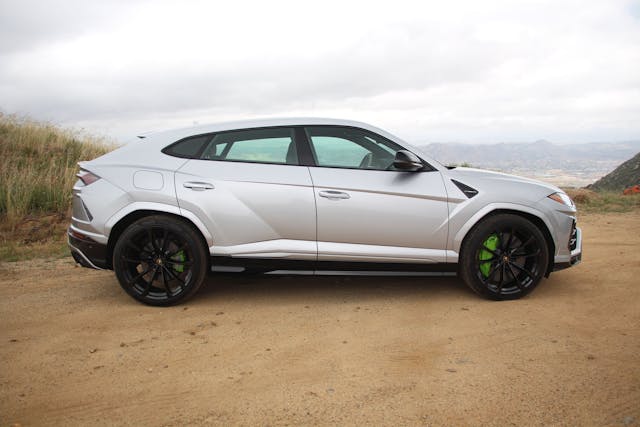
From the outside, there are few hints, if any, that this Lambo is based on the same architecture as the Cayenne and the Bentayga. Its sheetmetal is angular and dramatic—and, um, polarizing for many. A sloping roofline lends it that oh-so-fashionable coupe-like profile. The tester sent by Lamborghini was finished in Grigio Nimbus paint color—understated, as much as a Lamborghini can be—but the upholstery, trimmed in lime green to match the brake calipers, reminds you that this is no subtle statement.
Inside, the visual drama continues with digital screens, shift paddles that appear lifted straight from the Hurácan EVO, a prominent start button with a fighter-jet-type cover, and a console dominated by the large multi-terrain drive mode switch.
The driver interface is unusual in a number of ways, even compared to the rest of the Sant’Agata family. The Urus lacks a traditional shifter, and drive is selected by pulling the right shift paddle; in the Hurácan EVO, this tug would drop you into manual-shift mode. Should you wish to ratchet through the Urus’ gears yourself, you must punch the rectangular M to the right of the start button. Reverse is engaged by pulling up the large paddle that’s hinged over the start controller. Park is engaged by a stab of the “Park” button or simply by switching off your Urus. Unusual, indeed.
Aside from those ergonomic quirks, the Urus possesses all of the practicality you’d expect from a modern SUV. There is plenty of space for passengers plus cargo room for more than two full-size suitcases. The company says it’ll tow up to 7000 pounds, though I’ve yet to see anyone pulling their Lamborghini supercar to the track with a Urus.

All of that is well and good, but what I didn’t understand was how thoroughly Lamborghini’s engineers had resolved the drivetrain and chassis of the Urus. The engine puts power to the wheels via an eight-speed automatic transmission, a Torsen center differential, and an active, electronically controlled limited-slip differential at the rear axle. Pirelli developed a range of bespoke tires for the Urus in sizes from 21 to 23 inches, for everything from off-road to winter to summer driving conditions, so this Lamborghini has a well-stocked closet for any season.
Brakes are massive carbon-ceramic affairs—17.32-inch rotors in front and 14.57-inch units out back—that come as standard equipment along with ten-piston front calipers and six-piston rears. Steering, as you’d expect, is electrically assisted, but the system is of the variable-ratio, variable-assist variety, with a suitably quick ratio for carving corners. There’s a touch of rear steer, too, which leaves the fronts to their own devices at parking pace, then phrases in at higher speeds.
As impressive as those mechanical specs are, it’s the chassis that truly makes the Urus. Together, the active air springs, adaptive dampers, and active anti-roll bars comprise the secret sauce of this super SUV. The setup controls body and wheel motion with near-supercar levels of authority, controlling this nearly two-and-a-half ton Lamborghini exceptionally well. Roll, squat, and drive are admirably minimized, and the Urus can corner nearly as flat as the Hurácan EVO. O.K., not quite, but the Urus holds a line flatter than any other sport utility you can buy.

With that much confidence in the corners, I had all the encouragement I needed to push the Urus much harder than I’d originally planned. I was rewarded, too. The rear e-diff distributes torque as the Lamborghini’s control systems see fit, given driving conditions at the time, and from the driver’s seat its judgement seems flawless.

Ultimately, the Urus is the quickest and most satisfying SUV that I’ve ever driven. In daily driving, it’s an Italian sport utility teeming with unmistakable attitude. It’s loud, aurally and visually, and at the same time can swallow passengers and cargo with ease. If you want to enjoy yourself and tear up a few corners, it will keep up with plenty of performance cars, and give you one riot of a good time.
In its ability to provide pure driving satisfaction, this Urus completely changed my mind. If there’s such a thing as a performance sport utility without compromise, it’s this Lamborghini. Not only should Sant’Agata continue making SUVs, it should make a more powerful and more capable version. Urus SV, anyone?
Disclaimer: Thanks to Lamborghini for providing a complementary loan of this Urus. The author was responsible for his own travel expenses.
